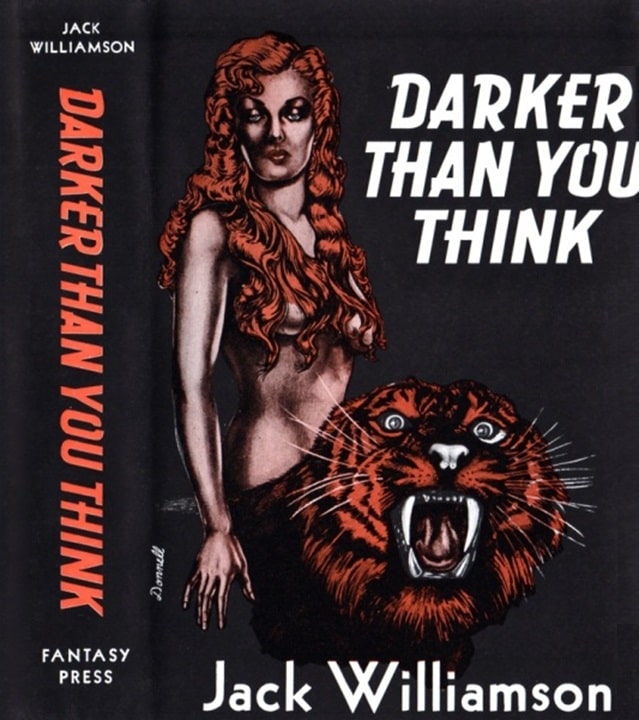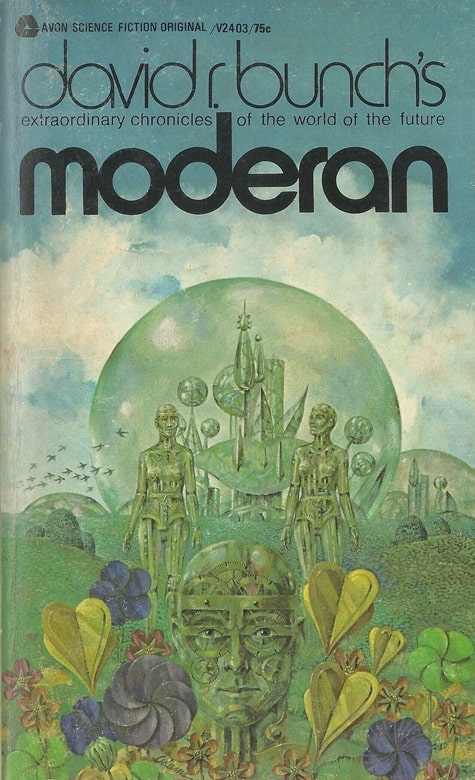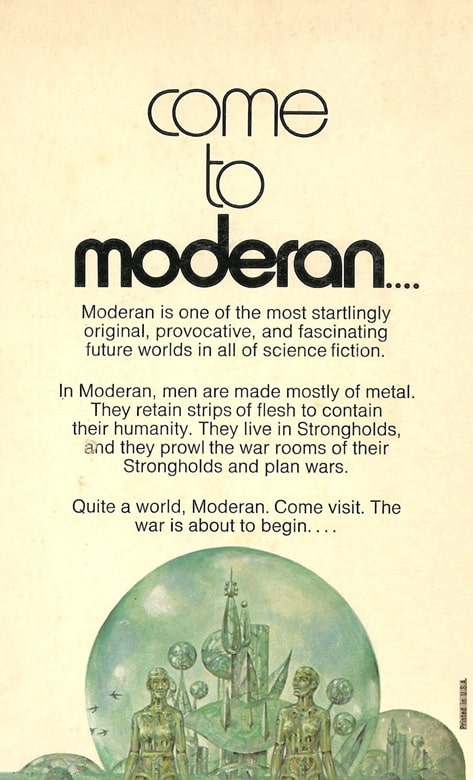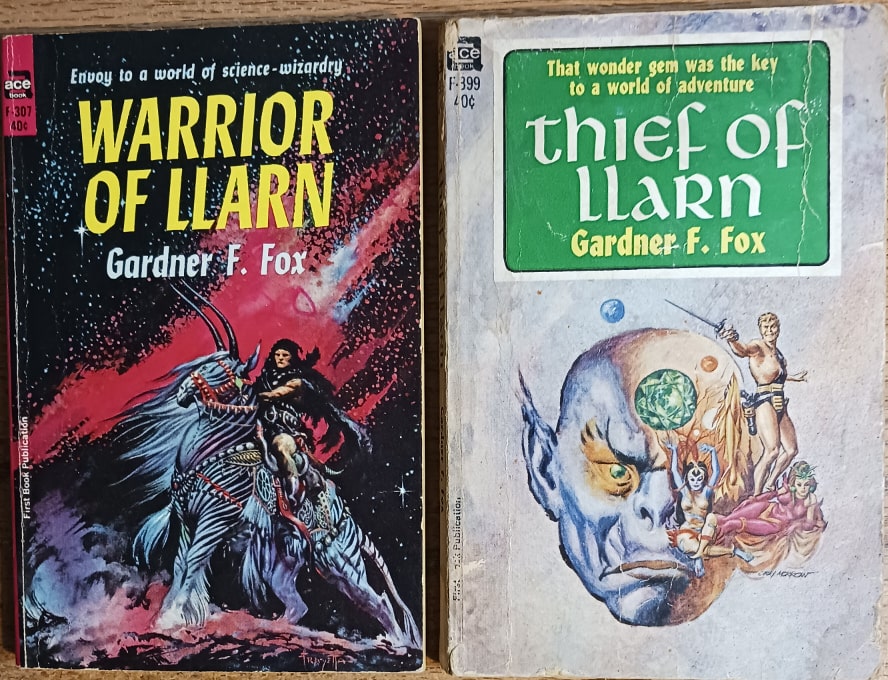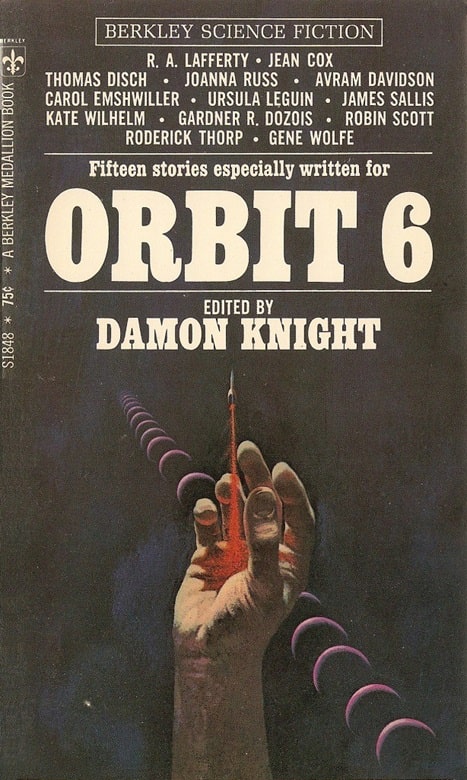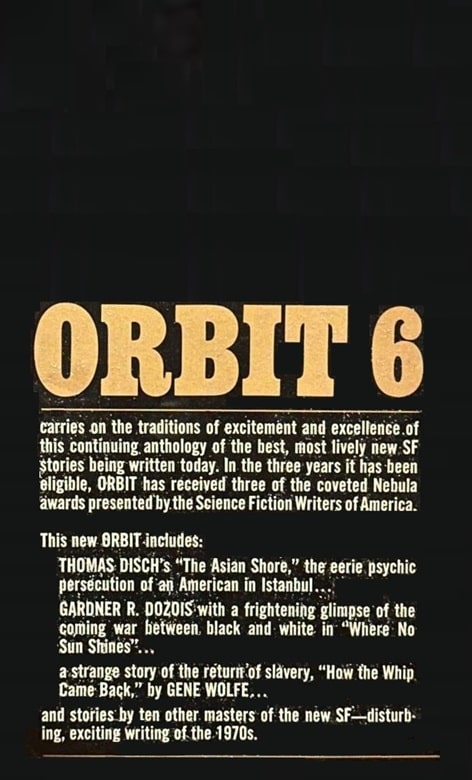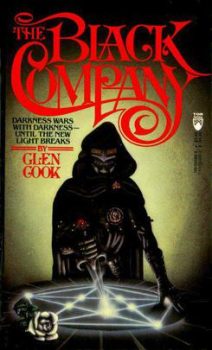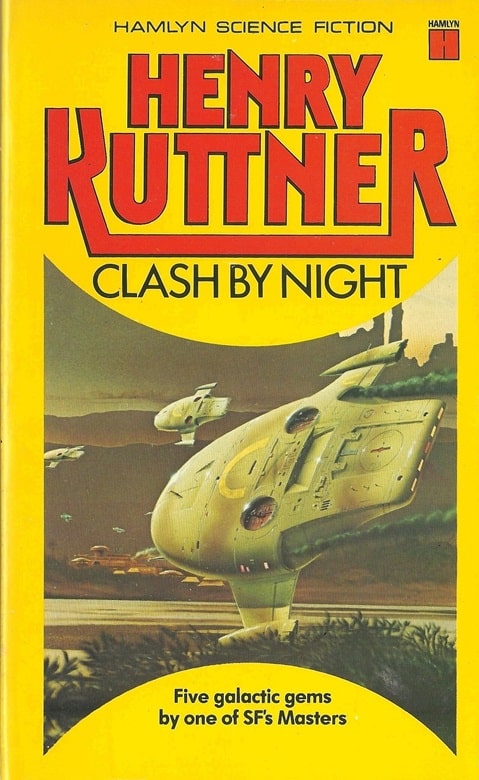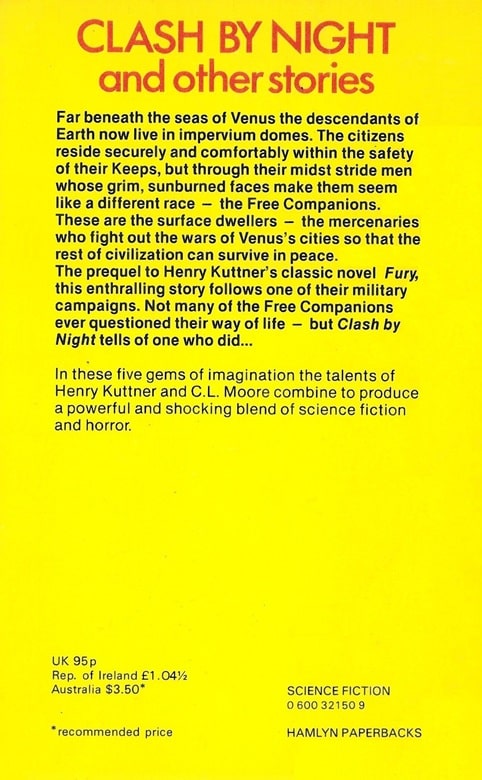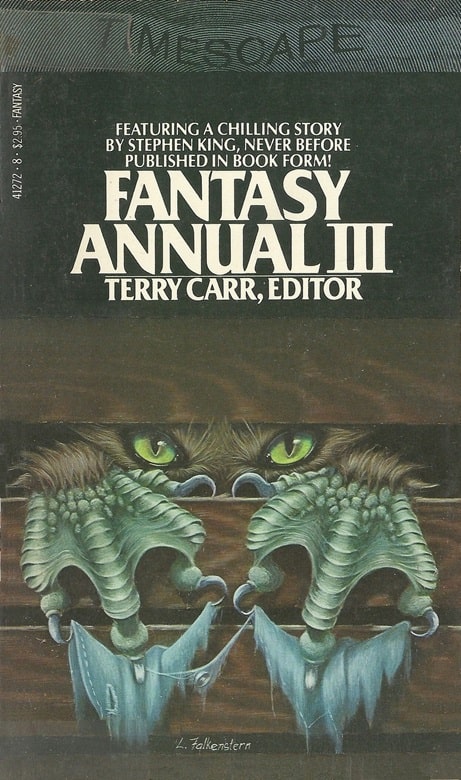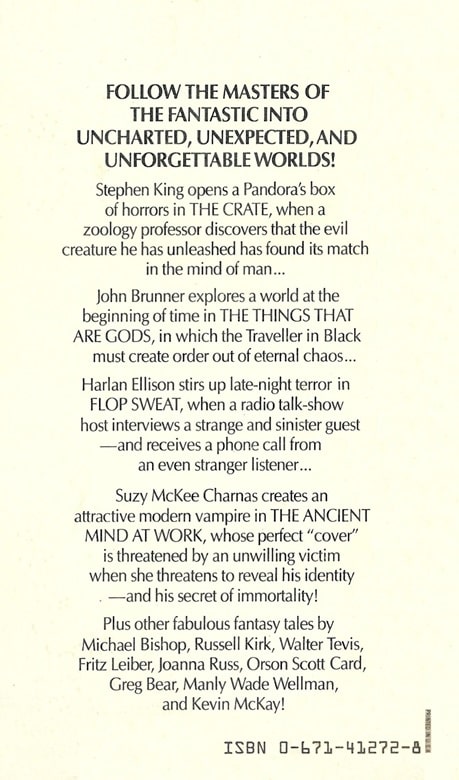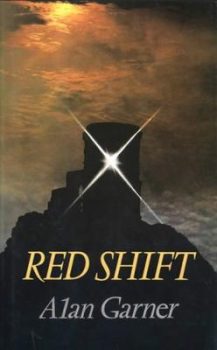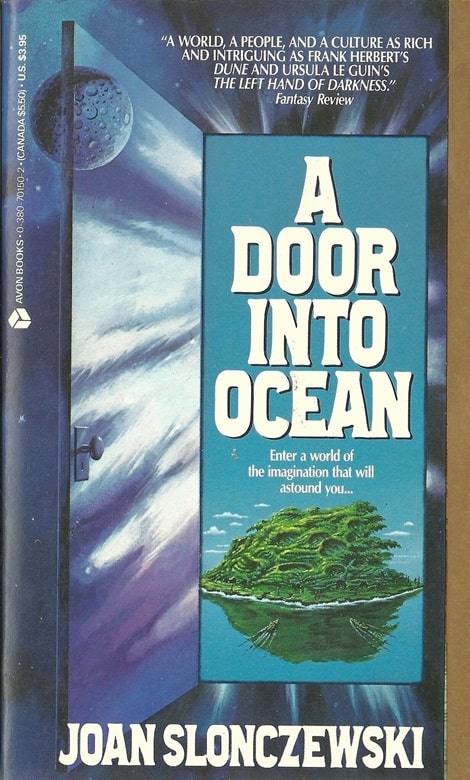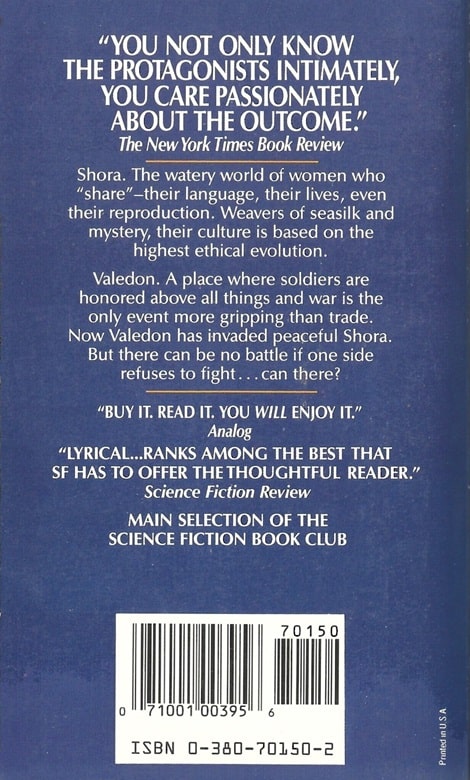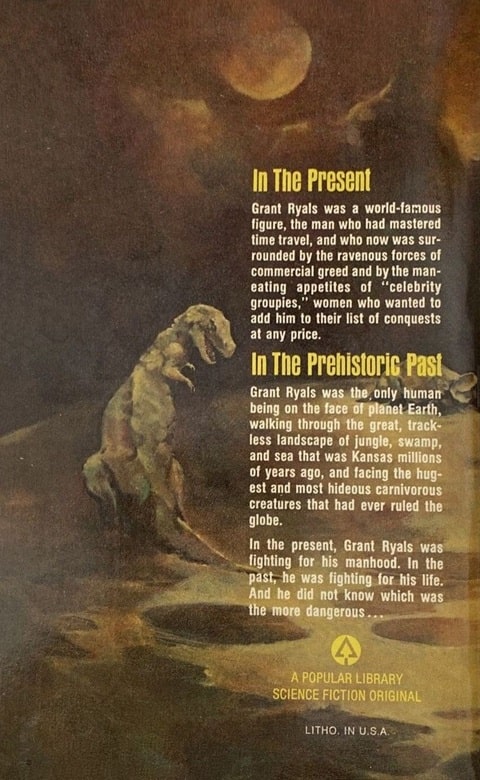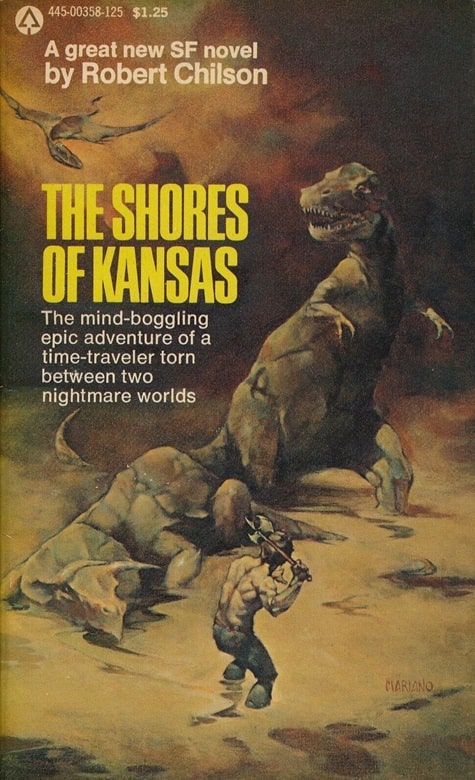From Mystery to Horror: Darker than You Think by Jack Williamson
Darker Than You Think (Fantasy Press, 1948). Cover by A. J. Donnell
Jack Williamson had an impressively long career in science fiction, from the pre-Campbell era into the twenty-first century. His first sale, in 1928, was to Hugo Gernsback’s Amazing Stories; his last book came out in 2005, the year before his death at 98. Darker than You Think is one of the high points of that career, published in 1948 as a novel expanded from a 1940 novella that appeared in John W. Campbell’s fantasy magazine Unknown.
Despite this venue, though, Darker than You Think is highly rationalized “fantasy,” to the point where it’s more accurately described as science fiction. Near the end of the novel, an important secondary character, Sam Quain, tells the protagonist that “supernatural” really means “superhuman.”
